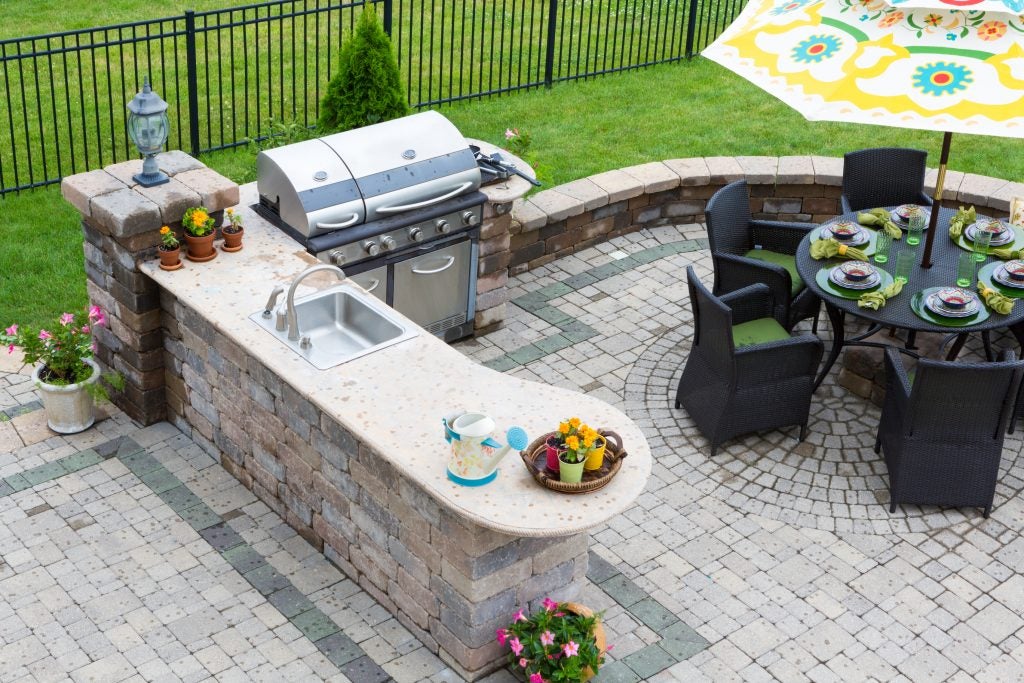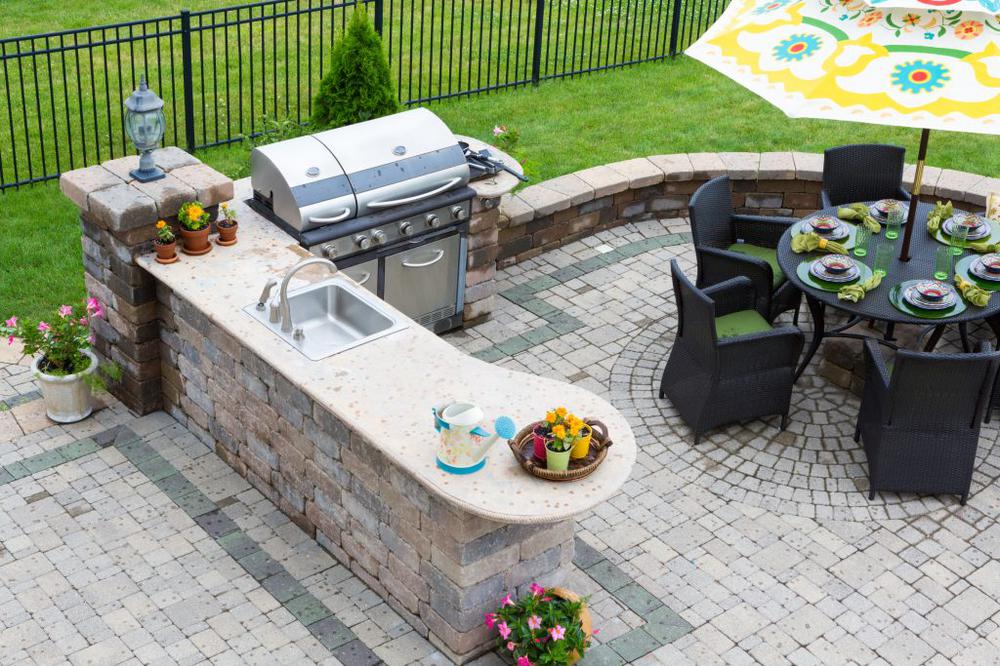Outdoor kitchens are a great gathering space and can be one of the top selling features of a home.
There’s no shortage of ideas for these spaces, as a simple online search will show, but the best ones have some important things in common: they’re easy to use, work well in less than ideal weather conditions, and are outfitted with thoughtfully chosen appliances and materials. Here are some things to consider when designing your ultimate outdoor kitchen.
Come Together
In the best designs, the indoor and outdoor kitchens function as one space, half of which happens to be outside. The most basic consideration is placement: putting the two spaces as close together as possible makes it easier for the cook to move between them. Large windows and sliding doors can visually link the spaces, while making it easier to pass food and dishes back and forth. Placing a small pantry in the pathway between the indoor and outdoor kitchens can make dishes and cookware easily accessible to both.
The two spaces can also work together visually. For instance outdoor decking or concrete can be colored to mimic the indoor flooring, similar countertop materials can be used, and the brick or stone used on the grill island can be chosen to match the indoor fireplace.
Extending the Season
There are ways to extend an outdoor kitchen’s usable season.
Many outdoor kitchens lack shelter from the sun or rain. That’s a mistake. Adding a pergola or simple roof will make it usable in all types of weather, and adding lighting or a ceiling fan will make it even more so. When the weather gets chilly, a gas or propane heater can extend the season considerably, as can a simple wall or fence placed where it will block prevailing winds. A shelter can also make it possible to add amenities like a flat screen TV.
Choosing Wisely
Marine-grade plywood is a good choice for outdoor cabinets. So are granite, glazed tile, or stone countertops.
The grill is the centerpiece of the outdoor kitchen. Stainless steel is the top choice, but can be expensive: for instance grilles made from #304 stainless steel have been known to last for years in harsh climates. However they do need cleaning and lubrication; even stainless steel will get surface rust. If stainless isn’t in the budget a powder-coated grille will last if maintained properly, but it needs to be made from quality steel.
The outdoor kitchen isn’t really a kitchen without a sink and fridge, but these can be approached differently than for the main kitchen. The sink is relatively simple choice, but ideally it should be big enough to hold party platters. The performance of outdoor refrigerators can be less than ideal. On a very hot summer day, for instance, even an expensive model may not provide adequate cooling. A simple alternative is to build a stainless steel beverage well into the counter and fill it with ice.
Following these guidelines will support an outdoor space that friends and family members can enjoy year round.



